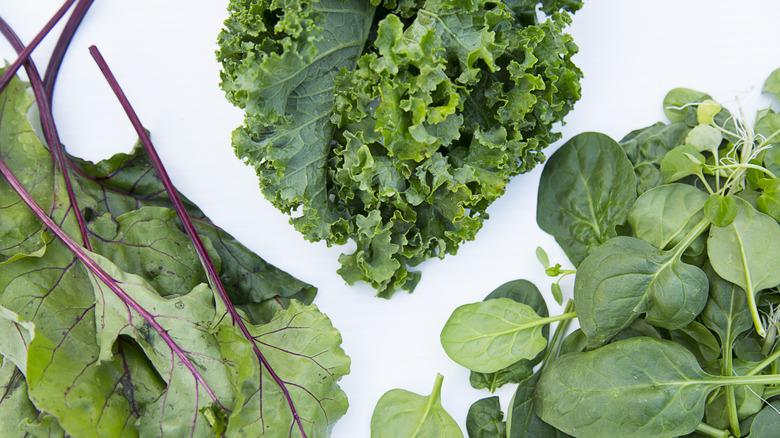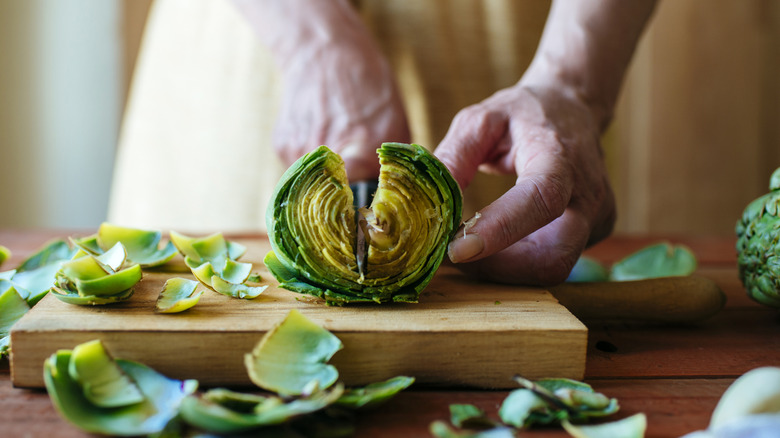Not Spinach Or Kale: This Is The Vegetable With The Most Fiber
When we think about adding fiber to our diets through vegetables, a lot of people default to the "big two" — spinach and kale. These leafy greens are super popular — is there anything we don't know about kale, in particular? Remember when it took the country by storm, and every salad and smoothie out there had kale in it? Spinach is an OG veggie, one that's old and reliable, ready to give you a boost when you need it. These two juggernauts are of course packed with nutrients and fiber, but they've also been elevated to near-mythical status. Perhaps shockingly, when it comes to sheer fiber content, though, neither of them takes the crown. That title actually goes to a more unexpected vegetable: the artichoke.
Artichokes might not show up on dinner tables as often as broccoli or carrots, and you may feel like they take too long to cook (though quick-cooking artichokes are achievable), but they quietly pack more fiber per serving than most of the better-known "healthy" picks. One cup of cooked artichokes contains 10 grams of fiber. That's over 10 times the amount that you'd get from a cup of raw spinach, and more than twice as much as a cup of boiled spinach.
Kale is more of a heavy hitter, giving you about 2.5 grams of fiber for one cup of raw kale, and a whopping 6 grams if the kale is cooked. However, they both fall short, so that makes artichokes one of the highest-fiber vegetables you can add to your plate, even though they don't get talked about nearly as much. You can steam them whole, strip off the leaves for dipping, or buy the hearts canned or marinated; whatever the case, artichokes bring big fiber content and versatility.
Why artichokes outrank other veggies in fiber
If fiber is the name of the game, then you'll want to eat the meaty base of the leaves as well as the heart. The leaves contain the most fiber, and scraping the edible part from the leaves with your teeth is how you eat them. You also want to ensure you utilize all edible artichoke parts so that there's no waste. Cook them by steaming, boiling, grilling, or roasting, which are all wonderful ways to prepare artichokes; just be sure to avoid the fibrous choke in the center of the heart.
The hearts, which are more tender, can be tossed into pasta, layered onto pizza, or folded into creamy dips. And if you lead a busy lifestyle, canned and jarred artichoke hearts make it even easier to enjoy their benefits without the prep work of trimming and steaming. If you're looking for a vegetable that really delivers on fiber, the answer isn't leafy greens; it's the artichoke.


